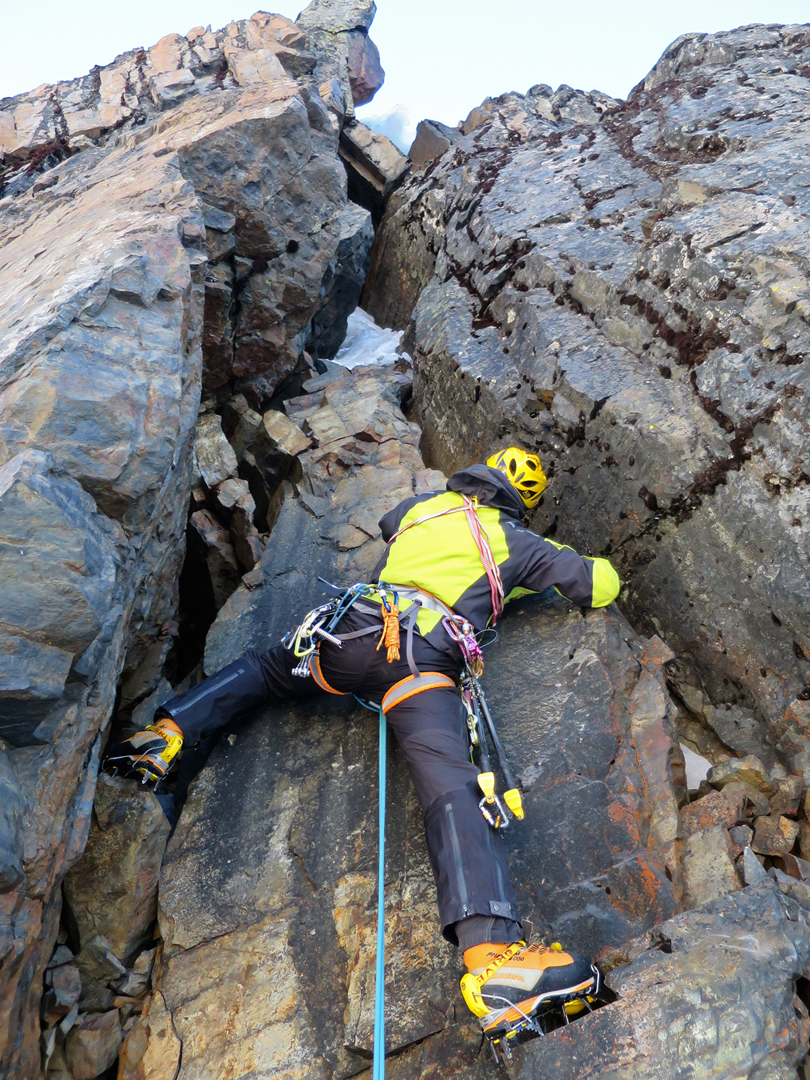Condoriri Region, Innominado (a.k.a. Alpamayo Negro), Southwest Ridge Direct
Bolivia, Cordillera Real

After their partial new route on the south face of Illimani, Marco Farina and Marco Majori returned to La Paz with plenty of time left before their flight home. In discussions with Aldo Riveros, a local mountain guide, the three hatched a plan to visit a mountain in the Condoriri group, for which there appeared to be little information. This peak is more remote than others in the group and the question was how to reach it. As it lay northeast of the popular Pequeño Alpamayo (5,410m), Riveros suggested the most convenient access would be over the top of this peak.
Together with Riveros, the Italians left Condoriri base camp at 3 a.m. on June 20 and climbed the normal route to the summit of Pequeño Alpamayo, which they gained in three hours. From here the terrain became more exploratory. They descended the northeast ridge of the Pequeño (IV, with a couple of 50° snowfields) to reach a col, and then continued up the southwest ridge of the peak they called Alpamayo Negro, but which is better known as Innominado. The three climbed more or less directly up the ridge, which was not trivial and featured mixed climbing on often poor rock, especially in the upper section. On the summit they found an ancient tin can. They retraced their steps and returned to base camp in a round trip of 14 hours. The height quoted is 5,428m, though the peak is of similar altitude to (or lower than) Pequeño Alpamayo. The three have named the route Arista de Cice (250m from the col, 5c WI3 M4).
This peak was called Innomindo by the first ascensionists, a Slovenian expedition that made 10 first ascents in the Condoriri region during 1964. After first crossing Pequeño Alpamayo, the Slovenians climbed from the col beneath Innominado. Their expedition report is not clear as to the exact line taken, but it appears they felt the southwest ridge, particularly in its upper section, was too steep, so they avoided it by first traversing across the left flank. Not far across this face lies a couloir that leads easily to the summit—it is presumed this is the line they took, probably finishing up the final section of the north-northwest ridge.
Lindsay Griffin, with information provided by Marco Farina, Italy





